Elements of Photography: Avant-garde Aesthetics and the Reforging of Nature
by Aglaya Glebova
The essay begins:
 “This is where we should go on vacation—in winter. What snow, light, mountains!” These lines were written by Aleksandr Rodchenko to his wife, Varvara Stepanova, from the White Sea-Baltic Canal, which was then being constructed by prisoners at an eponymous forced labor camp, one of the Soviet Union’s first, where more than twenty-five thousand—and possibly as many as fifty thousand—inmates lost their lives from 1931 to 1933. Had the photographer not yet seen the atrocities of the camp? Was he highlighting holiday pleasures in case his letter was read by someone other than its intended recipient? Rodchenko’s pronouncement is so utterly damning in its willful ignorance of the human toll of the construction of the canal as to render any possible justifications moot. This description of a gulag—bracketed, to top it off, with declarations that the sun and the air are “wonderful”—effectively bars any interpretive engagement. One’s only recourse, it seems, is to denounce Rodchenko’s deliberate blindness to the grim efficiencies of the state machine.
“This is where we should go on vacation—in winter. What snow, light, mountains!” These lines were written by Aleksandr Rodchenko to his wife, Varvara Stepanova, from the White Sea-Baltic Canal, which was then being constructed by prisoners at an eponymous forced labor camp, one of the Soviet Union’s first, where more than twenty-five thousand—and possibly as many as fifty thousand—inmates lost their lives from 1931 to 1933. Had the photographer not yet seen the atrocities of the camp? Was he highlighting holiday pleasures in case his letter was read by someone other than its intended recipient? Rodchenko’s pronouncement is so utterly damning in its willful ignorance of the human toll of the construction of the canal as to render any possible justifications moot. This description of a gulag—bracketed, to top it off, with declarations that the sun and the air are “wonderful”—effectively bars any interpretive engagement. One’s only recourse, it seems, is to denounce Rodchenko’s deliberate blindness to the grim efficiencies of the state machine.
Yet I open with this letter not to offer additional evidence against the artist. Rather, while keeping the letter’s dismaying omissions firmly in mind, I want to move past the screen that its glibness presents and focus on what it reveals about Rodchenko’s time at the canal: there he experienced a landscape, a place. Descriptions of nature—uncharacteristically for Rodchenko, since he was hardly enamored with the romantic notions of an earlier century—fill his brief letters home, and landscape appears, far more forcefully than ever before, in his photographs from the canal. These images of nature are remarkable in the context of the ideological climate from which they emerged. As the first Five-Year Plan (fulfilled in four years, 1928–32) unfolded, the Soviet state looked for ways to rationalize both the breakneck industrialization and mass repressions—developments joined at the hip, for the latter powered the former—that it undertook. The philosophy that underwrote both was the call for the complete transformation of the existing “old” world into a “new” socialist universe. The ideology crystallized and reached its apex in the rhetoric surrounding the White Sea-Baltic Canal project and its policy of “reforging” (perekovka), the term coined at the time to denote the discourse of molding both criminals and landscapes resistant to Soviet rule into productive, socialist beings through labor. The environment became, in essence, the most obdurate class enemy of the socialist state, whose intent was to transform the landscape’s sublimity and unpredictability into a pliant, rational, and productive entity. If, as the by-now canonical way of thinking in art history has it, landscape helps naturalize ideology, what happens when a state declares that nature must be radically, even totally, refigured? And how, then, might we begin to explain the aesthetic of Rodchenko’s canal landscapes, their quasi-romantic qualities above all? Continue reading …
In this essay art historian Aglaya Glebova traces the evolution of landscape imagery in Aleksandr Rodchenko’s photographic oeuvre, focusing especially on images produced during his journalistic trip to the White Sea-Baltic Canal, one of the first Soviet forced labor camps. Through close reading of photographs, she argues that Rodchenko’s abandonment of avant-garde aesthetics, in particular the emphasis on photography’s transformative powers and its medium-specificity, in these images did not represent a shift toward socialist realism but, rather, held critical potential in the face of contemporaneous official censure of formalism and “contemplation” in both science and art.
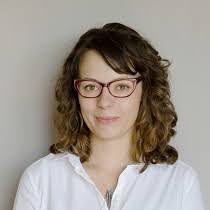 AGLAYA GLEBOVA is Assistant Professor in the departments of Art History and Film and Media, as well as the PhD Program in Visual Studies, at the University of California, Irvine. She is currently completing a book on Aleksandr Rodchenko and photography under Stalin.
AGLAYA GLEBOVA is Assistant Professor in the departments of Art History and Film and Media, as well as the PhD Program in Visual Studies, at the University of California, Irvine. She is currently completing a book on Aleksandr Rodchenko and photography under Stalin.

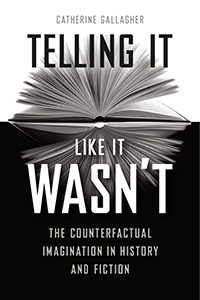 Inventing counterfactual histories is a common pastime of modern day historians, both amateur and professional. We speculate about an America ruled by Jefferson Davis, a Europe that never threw off Hitler, or a second term for JFK. These narratives are often written off as politically inspired fantasy or as pop culture fodder, but in Telling It Like It Wasn’t, Catherine Gallagher takes the history of counterfactual history seriously, pinning it down as an object of dispassionate study. She doesn’t take a moral or normative stand on the practice, but focuses her attention on how it works and to what ends—a quest that takes readers on a fascinating tour of literary and historical criticism.
Inventing counterfactual histories is a common pastime of modern day historians, both amateur and professional. We speculate about an America ruled by Jefferson Davis, a Europe that never threw off Hitler, or a second term for JFK. These narratives are often written off as politically inspired fantasy or as pop culture fodder, but in Telling It Like It Wasn’t, Catherine Gallagher takes the history of counterfactual history seriously, pinning it down as an object of dispassionate study. She doesn’t take a moral or normative stand on the practice, but focuses her attention on how it works and to what ends—a quest that takes readers on a fascinating tour of literary and historical criticism. Catherine Gallagher
Catherine Gallagher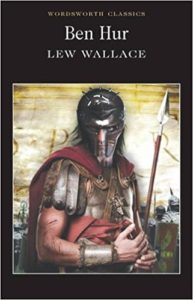 One curious feature of nineteenth-century British and American novels about Jesus is the fact that their central figure often remains largely offstage. In Harriet Martineau’s Traditions of Palestine (1830), William Ware’s Julian; or, Scenes in Judea (1841), Edwin A. Abbott’s Philochristus: Memoirs of a Disciple of the Lord (1878), Lew Wallace’s Ben-Hur: A Tale of the Christ (1880), James Freeman Clarke’s The Legend of Thomas Didymus: The Jewish Skeptic (1881), Marie Corelli’s Barabbas (1893), and Florence Morse Kingsley’s Titus, a Comrade of the Cross (1894), Jesus is pushed into the background while the narrative follows the life of a minor historical figure or the cultural milieu of first-century Palestine. Ware builds an elaborate character system out of various bit players from the canonical Gospels, turning Barabbas, the robber who is pardoned unwittingly in Jesus’s place, into Mary Magdalene’s ne’er-do-well brother and a proxy for her own narrative arc. Kingsley, beating Monty Python’s Life of Brian (1979) to the punch, forges a comic subplot out of the story of a cripple whom Jesus robs of employment: “Ha, fellow! thou didst heal me, three years ago, of the palsy, which had withered my limbs; and in so doing took away my living, for my begging no longer brought me money.” And behind all of this are elaborate historical backdrops drawn from both secular historiography and Holy Land tourist guidebooks.
One curious feature of nineteenth-century British and American novels about Jesus is the fact that their central figure often remains largely offstage. In Harriet Martineau’s Traditions of Palestine (1830), William Ware’s Julian; or, Scenes in Judea (1841), Edwin A. Abbott’s Philochristus: Memoirs of a Disciple of the Lord (1878), Lew Wallace’s Ben-Hur: A Tale of the Christ (1880), James Freeman Clarke’s The Legend of Thomas Didymus: The Jewish Skeptic (1881), Marie Corelli’s Barabbas (1893), and Florence Morse Kingsley’s Titus, a Comrade of the Cross (1894), Jesus is pushed into the background while the narrative follows the life of a minor historical figure or the cultural milieu of first-century Palestine. Ware builds an elaborate character system out of various bit players from the canonical Gospels, turning Barabbas, the robber who is pardoned unwittingly in Jesus’s place, into Mary Magdalene’s ne’er-do-well brother and a proxy for her own narrative arc. Kingsley, beating Monty Python’s Life of Brian (1979) to the punch, forges a comic subplot out of the story of a cripple whom Jesus robs of employment: “Ha, fellow! thou didst heal me, three years ago, of the palsy, which had withered my limbs; and in so doing took away my living, for my begging no longer brought me money.” And behind all of this are elaborate historical backdrops drawn from both secular historiography and Holy Land tourist guidebooks.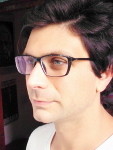 SEBASTIAN LECOURT
SEBASTIAN LECOURT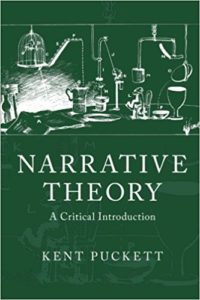 –whose book Narrative Theory: A Critical Introduction (Cambridge UP, 2016) has won the
–whose book Narrative Theory: A Critical Introduction (Cambridge UP, 2016) has won the 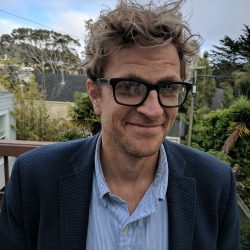 KENT PUCKETT
KENT PUCKETT